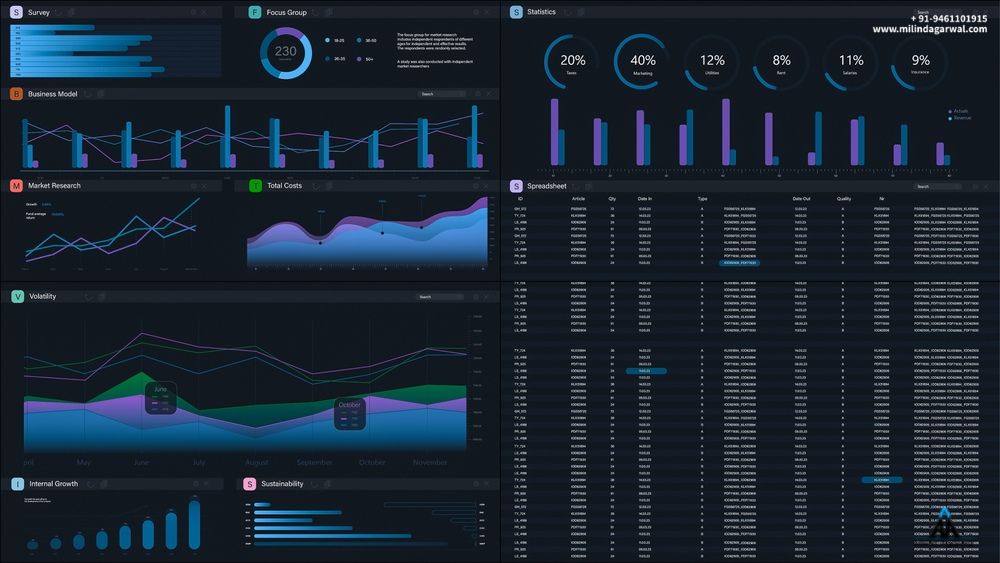In the ever-evolving landscape of law enforcement, the use of technology has become integral to investigating and solving crimes. One such tool that has gained prominence is Call Detail Record or CDR analysis software for Police. This powerful tool allows police to analyze communication patterns, track the movement of individuals, and gather critical evidence. However, with great power comes great responsibility, and law enforcement agencies must prioritize data privacy and legal compliance when utilizing CDR analysis software.
Understanding CDR Analysis Software
Call Detail Records are generated by telecommunication service providers and contain information about calls and text messages, including the numbers involved, call duration, time, and location. CDR analysis software enables law enforcement agencies to extract and analyze this information to map connections, identify suspects, and establish timelines of events.
Data Privacy Concerns
As law enforcement embraces technology to enhance investigative capabilities, it must simultaneously address the growing concerns related to data privacy. CDR analysis software deals with sensitive information, and mishandling such data can lead to serious consequences, infringing upon individuals' privacy rights.
To ensure data privacy, law enforcement agencies must implement strict protocols and security measures when using CDR analysis software. Access to the software and the data it processes should be limited to authorized personnel, and robust encryption methods should be employed to protect the information from unauthorized access or cyber threats.
Legal Compliance in CDR Analysis
Legal compliance is paramount in the use of CDR analysis software, and law enforcement agencies must adhere to established laws and regulations governing the collection and use of communication data. Here are key considerations to ensure legal compliance:
Warrants and Legal Authorization:
Law enforcement agencies should obtain appropriate warrants or legal authorization before accessing CDRs. This ensures that the use of CDR analysis software is within the bounds of the law and protects individuals' Fourth Amendment rights against unreasonable searches and seizures.
Adherence to Privacy Laws:
Compliance with privacy laws, such as the Electronic Communications Privacy Act (ECPA) in the United States or the General Data Protection Regulation (GDPR) in Europe, is crucial. Agencies must understand and abide by the specific provisions of these laws to avoid legal complications.
Transparency and Accountability:
Maintaining transparency about the use of CDR analysis software is essential. Law enforcement agencies should inform the public about their capabilities and the guidelines they follow to ensure accountability. Transparency helps build trust between law enforcement and the communities they serve.
Data Minimization and Retention Policies:
Implementing data minimization practices involves collecting only the necessary information for a specific investigation. Additionally, establishing clear retention policies ensures that data is not stored longer than required by law. These measures contribute to reducing the risk of misuse or unauthorized access.
Collaboration with Service Providers:
Law enforcement agencies must collaborate with telecommunication service providers to ensure that the retrieval of CDRs adheres to legal standards. Establishing a cooperative relationship with service providers helps in obtaining accurate and relevant information while respecting privacy rights.
Best Practices for Law Enforcement Agencies
To strike a balance between effective crime-solving and safeguarding individual rights, law enforcement agencies can adopt the following best practices:
Training and Education:
Continuous training programs for law enforcement personnel on the ethical use of CDR analysis software and the importance of privacy rights can enhance awareness and competence.
Regular Audits and Oversight:
Conducting regular audits of CDR analysis practices and implementing oversight mechanisms can help identify and rectify any potential misuse or non-compliance issues.
Engaging with Privacy Advocates:
Collaboration with privacy advocacy groups and experts can provide valuable insights for law enforcement agencies to refine their practices and address concerns related to CDR analysis.
Conclusion
In the digital age, the use of CDR analysis software is a powerful tool for law enforcement agencies. However, it is imperative that agencies prioritize data privacy and legal compliance to uphold the trust and rights of the individuals they serve. By implementing stringent protocols, adhering to relevant laws, and embracing best practices, law enforcement can leverage technology responsibly and ethically, ensuring a balance between public safety and individual privacy.


No comments yet